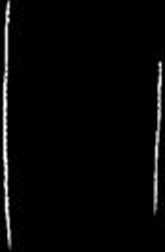8589356584
44 JACEK LECH
illustrates stone picks, pick hammers, rabbler picks, hoes madę from crystalline rocks. Among flint tools, picks and hoe points were found. Picks, hammers and bits were madę of antler (Krukowski 1939, 33-39). Similar tools occurred in further publications by T. Żurowski (1954, 281; 1960, 266 f.; 1962, 44-52). In the minę at Krzemionki decr antlers, and also a few elk, roe-deer and auroch antlers were utilizcd (Krukowski 1939, 33, 37; T. Żurowski 1960, 266). In 1953 the remains of a wooden tool were found, but it was impossible to rccog-nize its shape (T. Żurowski 1954, 281; 1960, 263; 1962, 44).
Fig. 70. Vicrina-Mauer. Stone axcs with hole for fitting handle,
used for mining work
Aftcr E.Ruttkay
Parts of deer antlers served as tools at the Vienna-Mauer minę (Fig. 69). They were used as levers and hammers. Various kinds of stone axes, mentioned earlier, were used to work the rock (Figs. 70 and 71). Hammers madę of diabasc, hand axes of greenstonc and hammer-stones of Danubian flint and quartz were also used (Kirn-bauer 1958; Ruttkay 1970). Investigations at Polany minc showed that until the middlc of the 2nd Millennium b.c. flint and antler picks (and perhaps lcvcrs) were used to exploit flint from Karstic clay and from the roof of the piaty limestone.

Excavations at Polany Kolonie flint minc discovcrcd a specific set of tools dated to the end of the 3rd Millennium b.c. Antler levcrs were the commonest tools and they servcd to puli both flint nodules and limestone slabs out of the walls and the shaft bottom (Schild, Królik, Mościbrodzka 1977, 67-76). This is shown by distinct utilization traces (Fig. 72). Four fully preserved specimens measured from 268 to 317 mm in length. In addition, a pick, a hammer, and a double ended levcr or a digging stick were found, all madę of red deer antler. Picks occur among flint mining tools. In addition there are also some specially madę flint tools (Fig. 73c,e), which can be deflned as bihorned pieces (in Polish dwurogacz) known from the flint minę Polany Kolonie and from many other “chocolate” flint cxpIoita-tion points. We must agree with the view of R. Schild that bihorned pieces were linked with flint mining and were probably used to trim branches into usablc wooden poles with a round section.
Fig. 71. Vicnna-Mauer. Stone axes (1-3) and hammer-stone (4),
used in the area of the minę
Aftcr E.Ruttkay
Macrolithic side scrapers and end scrapers were probably used to clean the clay or the soft chalk off the ex-truded nodules and they are known from many raw materiał exploitation points where the deposits are situated in eluvial clays or glacial formations (Fig. 73 a, d). They could also have been used in digging the minc shaft and preparing the mining tools on the sitc. C. J. Becker (1951, 147) found traccs of work of such tools on the flint cortex of the materiał originating from the chalk deposits at the Aalborg minę, in the north part of the Jut-land Peninsula, as did B. Balcer (1975, 61 f.) on some specimens from the Świeciechów minę.
Wyszukiwarka
Podobne podstrony:
38 JACEK LECH Fig. 59. Krasnoye Sclo, Volkovysk dist. Shaft No 17 from excavation IV Aftcr N.N.Gurin
Manipulacja w języku r02 44 Jacek Warchoła nej, w której obrębie pojawiają się możliwości uniwersaln
44 Jacek Mizerka2. Podejście deskryptywne Modele normatywne próbują oceniać zjawiska zachodzące w
16 JACEK LECH Fig. 15. Sećovce, Trebi.fov dist. The analysis of the archaeological materials from th
18 JACEK LECH Fig. 18. Ojców National Park near Cracow. Korytania ravine. Searching for flint in con
20 JACEK LECH of obtaining raw materials in prehistorie Europę. We in-clude here A. L. Armstrong’s t
22 JACEK LECH tory of the flint minę at Bębło near Cracow (Fig. 22). The excavated depth of No 1 was
24 JACEK LECH Fig. 27. Sąspów, Cracow dist. Cross section of shaft No 1 and portion of Shaft No 2 a
32 JACEK LECH Fig. 45. Polany Kolonie, Radom dist. Fragment of the mining field after removal of soi
34 Jacek lech there was a smali working in the form of a nichc with a dipping roof. Its maximum heig
40 JACEK LECH VII. SURYEY OF WORKING TOOLS The researchers of prehistorie mines face numerous problc
8 JACEK LECH 1 — Krasnoyc Sclo 2 — Karpovcy 3
46 JACEK LECH Fig. 73. Flint tools from mines in Polish territories a — macrolithic sidc-scraper (Są
48 JACEK LECH Tablc 1. Radiocarbon dates for prehistorie flint mines in Centra! Europę and its
50 JACEK LECH This should be dated to the last centuries of the 5th Mili. b.c. In the 4th Mili. b.c.
52 JACEK LECH II Symposium — Tweede Internationale Symposium over Vuur- steen, 8-1
54 JACEK LECH Kielce {Poland) and its Dcposits, “Folia Quaternaria”, 41, Kraków, p.61-132. Kozłowski
więcej podobnych podstron